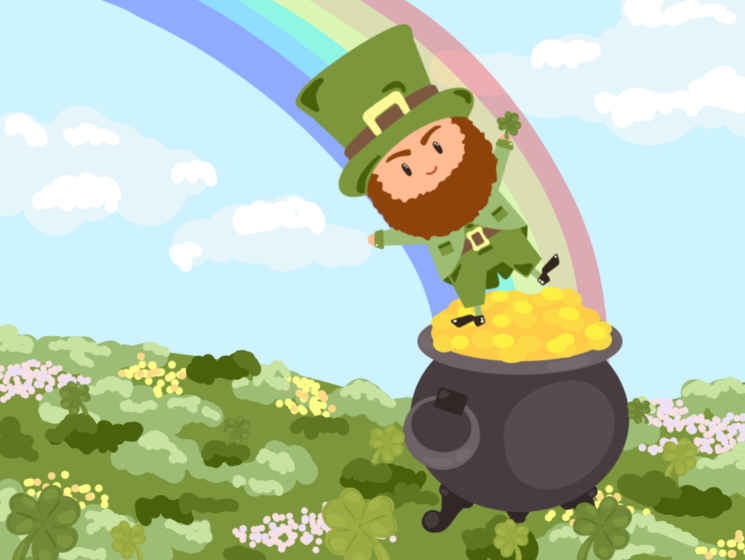
By Minh Ngoc Le
As March breezes through, so does the blooming of vibrant shamrocks and the widely celebrated St. Patrick’s day. Taking place annually on March 17th, this holiday not only celebrates Saint Patrick, but also the heritage and culture of the Irish, home to the place where this holiday originates. People around the world celebrate in many different ways; from wearing green clothes and jewelry, shamrock glasses, drinking with their friends, to even dying the Chicago River green. Despite the difference in practices, one thing remains apparent throughout: the age-old symbols connected to St. Patrick’s and the deep messages behind these small yet striking images.
The color green
Ireland, often nicknamed the Emerald Isle, proudly wears green stripes on its flag along with its horizontal orange and white lines. Since ancient times, the color green has represented the Catholics of Ireland, the orange represented the Protestants, and the white in the middle symbolizes the peace between the two religions. This color, deeply engrained into Ireland’s history, is often worn in today’s celebrations as a symbol of good luck while also serving as a way to honor Ireland’s ancestry.
Leprechauns
The word Leprechaun, originating from the folklore word, “lubricin,” refers to a small-bodied fellow who could use their magical powers to perform the goods or evils of the world. These creatures were traditionally responsible for mending the shoes of fairies, as believed in Celtic beliefs, and are known for their trickery, used to protect their beloved treasures. It is believed that wearing green makes you invisible from these mischievous leprechauns, who enjoy pinching anyone in their sight.
Shamrocks
Shamrocks, commonly known as three-leaf clovers, are widely known as a symbol of good luck. Though it may be common to find these leaves, the history involved with this delicate symbol dates back to the 400s. St. Patrick, a Christian missionary who traveled to Ireland, used this simple leaf to explain the Holy Trinity of Christianity: God the Father, God the Son, and God the Holy Spirit. The shamrock became a symbol of St.Patrick, who became the Patron Saint of Ireland.
Pots of gold
Ancient Irish folklore once said that fairies put gold pots at the end of each rainbow for leprechauns to guard. For each year that a leprechaun has lived, there is a gold coin that corresponds with its age. Unlike other symbols, however, this belief’s value has slowly changed over the years, with gold symbolizing wealth and richness instead of experience in one’s life.
Rainbow
St. Patrick viewed the rainbow as a representation of God’s promise to never destroy the earth with a flood again. Eventually, these Irish myths, legends of rainbows, and pots of gold merged with Christian beliefs to where we are today.





